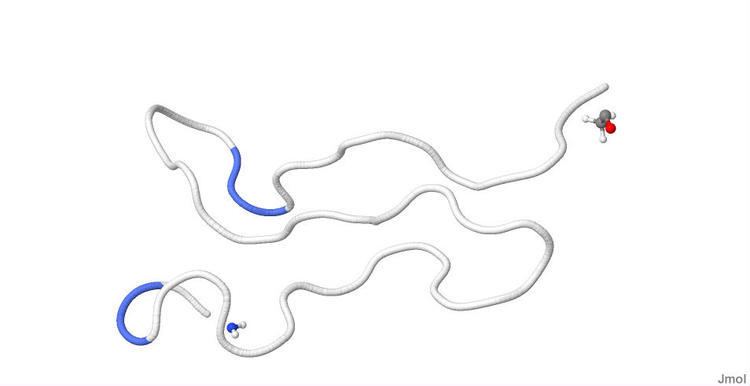Aliases CFC1B, entrez:653275 Ensembl ENSG00000152093 | Entrez 653275 | |
 | ||
External IDs MGI: 109448 HomoloGene: 50007 GeneCards: CFC1B | ||
Cripto is an EGF-CFC or epidermal growth factor-CFC, which is encoded by the Cryptic family 1 gene. Cryptic family protein 1B is a protein that in humans is encoded by the CFC1B gene. Cryptic family protein 1B acts as a receptor for the TGF beta signaling pathway. It has been associated with the translation of an extracellular protein for this pathway. The extracellular protein which Cripto encodes plays a crucial role in the development of left and right division of symmetry. Mutations of it could cause congenital heart disease.
Contents
Crypto is a glycosylphosphatidylinositol-anchored co-receptor that binds nodal and the activin type I ActRIB (ALK)-4 receptor (ALK4).
Structure
Cripto is composed of two adjacent cysteine-rich motifs: the EGF-like and the CFC of an N-terminal signal peptide and of a C-terminal hydrophobic region attached by a GPI anchor, which makes it a potentially essential element in the signaling pathway directing vertebrate embryo development. NMR data confirm that the CFC domain has a C1-C4, C2-C6, C3-C5 disulfide pattern and show that structures are rather flexible and globally extended, with three non-canonical anti-parallel strands.
Function
In the Nodal signaling pathway of embryonic development, Cripto has been shown to have dual function as a co-receptor as well as ligand. Particularly in cell cultures, it has been shown to act as a signaling molecule with the capabilities of a growth factor, and in co-culture assays, it has displayed the property of a co-ligand to Nodal. Glycosylation is responsible for mediating this interface with Nodal. EGF-CFC proteins’ composition as a receptor complex is further solidified by the GPI linkage, making the cell membrane connection able to regulate growth factor signaling of Nodal.
Expression during embryonic development
High concentrations of Cripto are found in both the trophoblast and inner cell mass, along the primitive streak as the second epithelial-mesenchymal transformation event occurs to form the mesoderm, and in the myocardium of the developing heart. Though no specific defect has been formally associated with mutations in Cripto, in vitro studies that disrupt gene function at various times during development have provided glimpses of possible malformations. For example, inactivation of Cripto during gastrulation disrupted the migration of newly formed mesenchymal mesoderm cells, resulting in the accumulation of cells around the primitive streak and eventual embryonic death. Other results of Cripto disruption include the lack of posterior structures. and a block on the differentiation of cardiac myocyte,. both of which lead to embryonic death.
Cripto’s functions have been hypothesized from these null mutation studies. It is now known that Cripto is similar to other morphogens originating from the primitive streak in that it is asymmetrically expressed, specifically in a proximal-distal gradient, explaining the failure of posterior structures to form in the absence of Cripto.
Clinical significance
CFC1B has oncogene potential due to the tumor cell proliferation through initiation by autocrine or paracrine signaling. Furthermore, the cryptic protein is highly over-expressed in many tumors such as colorectal, gastric, breast, and pancreatic cancers in homosapiens. Cripto is one of the key regulators of embryonic stem cells differentiation into cardiomyocyte vs. neuronal fate. Expression levels of cripto are associated with resistance to EGFR inhibitors.
